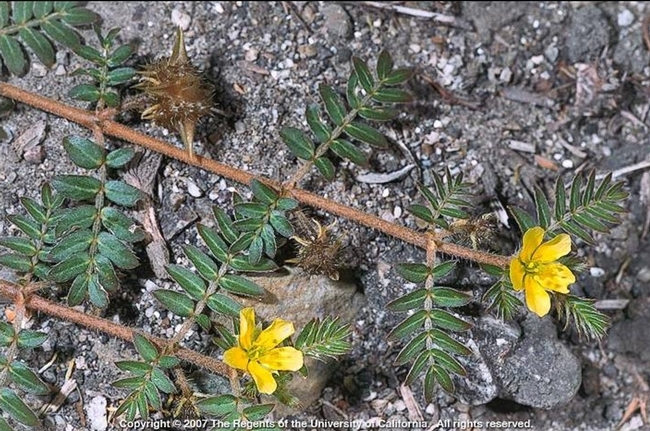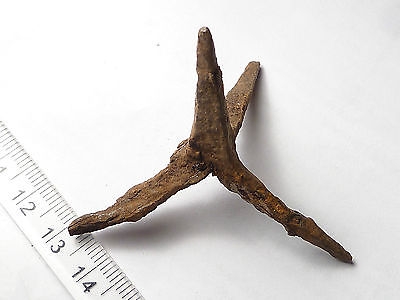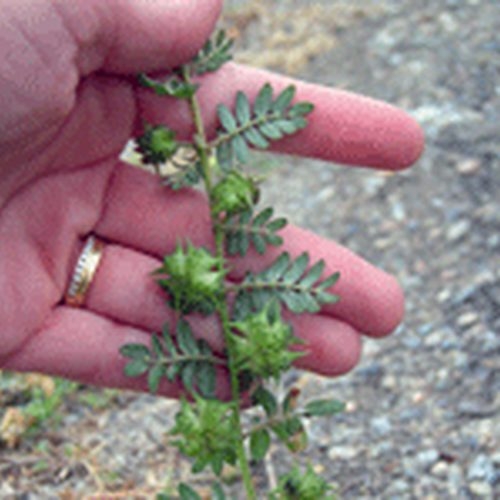Puncturevine (Tribulus terrestris) kept a low profile during the drought years but seems to have exploded following this year's rains. (It is still ‘lying low', so to speak, but there is a lot more of it.)
Also known as goatheads or caltrop, puncturevine is a prostrate annual that produces large, hard, spiked seeds. The seeds disseminate by sticking to animals, tires, and feet, and can easily puncture bike and ATV tires. I tried to do a puncturevine study once but couldn't get the seeds to germinate; my theory now is that the seeds have to be run over by a vehicle before they'll sprout. Conveniently, the plant is commonly found along dirt roads, on roadsides, and on the edges of ag fields.
Puncturevine is native to southern Eurasia and Africa. It is in the plant family Zygophyllaceae, which also includes the creosote bush native to the Mojave Desert.
Extracts from puncturevine seed and other plant parts are available as a dietary supplement, and are reputed to boost virility. I'm guessing this is a holdover from the old medical idea of homology, where the shape of a plant suggested the ailment it was supposed to cure. And the puncturevine seed looks sort of like a goat head, and goats are, you know, lusty. However, WebMD says “Taking tribulus as a supplement for a short time is probably safe, provided that you're healthy and you are not pregnant or breastfeeding.” Hardly a ringing endorsement.
Two species of weevil from puncturevine's native range have been introduced into the U.S. They help keep puncturevine populations in check but they seem to be locked in a boom-and-bust cycle with the plant: when puncturevine populations crash, so do the weevils, and the plant resurges the following year.
More information on this species, including methods for control, are available in a Weed Report at the Weed Research and Information Center and in UC-ANR's Pest Notes.
Attached Images:


